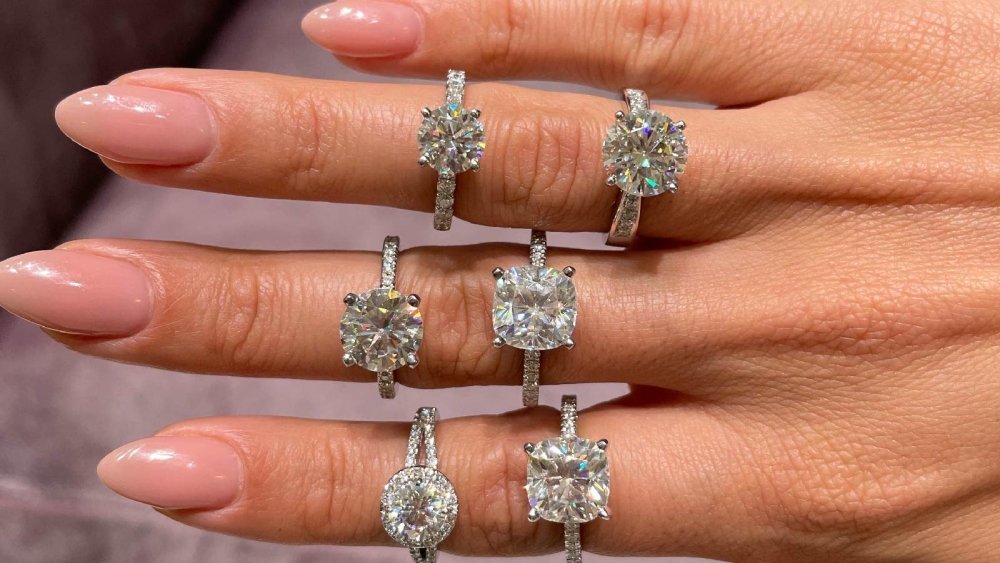
Moissanite vs Diamond: A Comprehensive Comparison
April 2, 2024When it comes to choosing the perfect gemstone for an engagement ring or other jewelry pieces, the decision often boils down to moissanite vs diamond. Both gemstones possess their unique characteristics, advantages, and considerations. In this detailed guide, we’ll explore the differences between moissanite and diamond, shedding light on their origins, properties, brilliance, and more.
Table of Contents
Origins and Formation
Diamonds
Diamonds are formed deep within the Earth’s mantle under extreme pressure and heat over millions of years. They are brought to the surface through volcanic eruptions and deposited in diamond-bearing rock formations or alluvial deposits. Diamonds are composed of pure carbon arranged in a crystalline structure, making them one of the hardest naturally occurring substances on Earth.
Moissanite
Moissanite, on the other hand, is a rare mineral that was first discovered in 1893 by French chemist Henri Moissan in a meteor crater in Arizona. Natural moissanite is exceedingly rare, and most moissanite available in the market today is lab-grown. These lab-created moissanite gemstones are produced using advanced technology to mimic the natural formation process of moissanite crystals.
Physical Properties
Hardness
Diamonds are renowned for their exceptional hardness, scoring a perfect 10 on the Mohs scale of mineral hardness. This hardness makes diamonds highly resistant to scratching and abrasion, making them ideal for everyday wear. Moissanite is also incredibly hard, ranking just below diamonds with a score of 9.25 on the Mohs scale.
Brilliance and Fire
Both moissanite and diamonds exhibit stunning brilliance and fire, but they do so in slightly different ways. Moissanite tends to have a higher refractive index than diamonds, giving it a greater brilliance and sparkle in certain lighting conditions. However, some individuals prefer the subtle sparkle of diamonds, which is characterized by broader flashes of light.
Color and Clarity
Color
In terms of color, both moissanite and diamonds come in a range of hues, including colorless, near-colorless, and fancy colors. However, unlike diamonds, moissanite is not graded on the traditional GIA color scale. Instead, moissanite typically exhibits a slight yellow or green tint, especially in larger stones.
Clarity
When it comes to clarity, diamonds are graded based on the presence of internal and external blemishes, known as inclusions. In contrast, moissanite is relatively free from inclusions due to its lab-grown nature, resulting in excellent clarity and transparency.
Pricing and Affordability
Cost Comparison
One of the most significant advantages of moissanite over diamonds is its affordability. Moissanite gemstones are typically priced significantly lower than man made diamonds of similar size and quality. This makes moissanite an attractive option for budget-conscious consumers who want the look of a diamond without the hefty price tag.
Value Proposition
While diamonds are often considered a symbol of luxury and status, moissanite offers exceptional value for money. With its brilliant sparkle, durability, and affordability, moissanite allows consumers to achieve the look and feel of a diamond at a fraction of the cost.
Conclusion
In the debate of moissanite vs diamond, there is no clear winner. Both gemstones have their unique appeal and advantages, making them suitable for different preferences and budgets. Whether you opt for the timeless elegance of a diamond or the affordability and brilliance of moissanite, what matters most is selecting a gemstone that resonates with your personal style and values.
